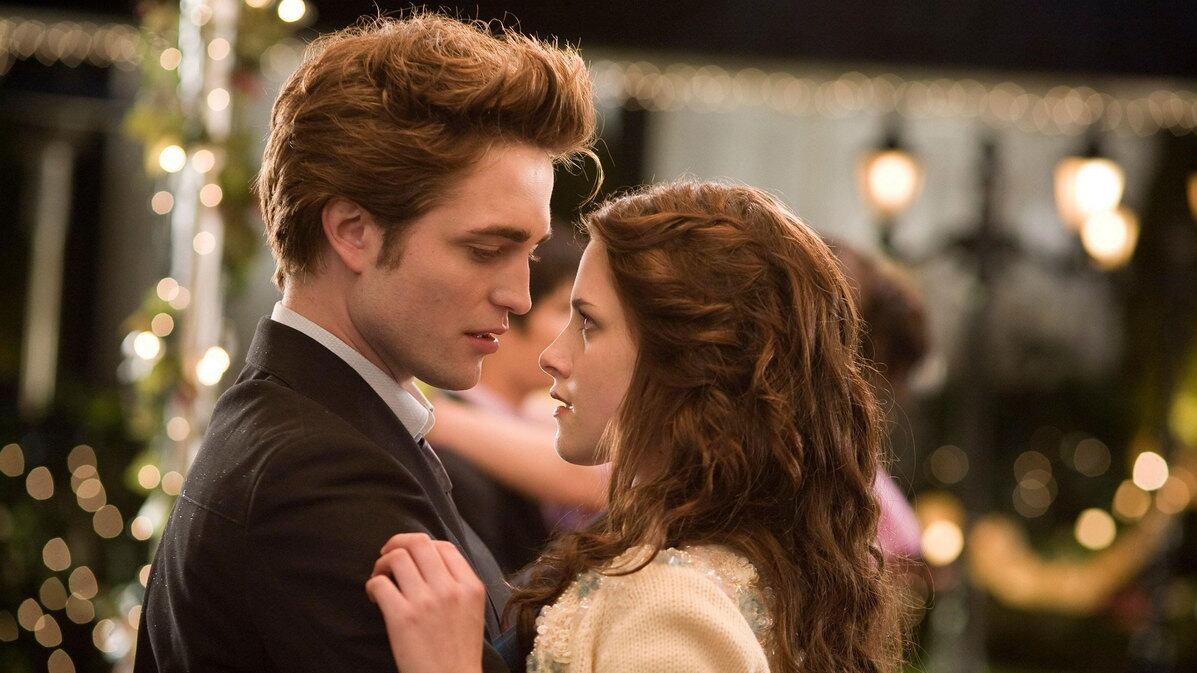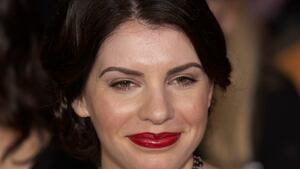In Twilight, the young adult fantasy series written by Stephenie Meyer and later turned into a blockbuster film franchise starring Kristen Stewart and Robert Pattinson, the main character—a tortured, mysterious vampire named Edward Cullen—was transformed into a monster while suffering from Spanish Influenza in 1918. So begins the saga of Edward (played by Pattinson).
Ever since the first film came out in 2008, Twilight has been a success, raking in $3.3 billion at the box office and selling 120 million copies. In 2020, as another devastating pandemic relegates many of us congealed to our couches, the fictional Edward Cullen has enjoyed something of a revival.
There is something about this year, specifically, that makes people want to nuzzle into a throw blanket and binge 10 or so hours of this teenage love story. (It doesn’t hurt that Hulu added all five films in the saga to its oeuvre in September.) On TikTok, the “Twilight” hashtag has over 3.5 billion views, and accounts like @TwilightFaves and @_Twilight_2008 share behind-the-scenes clips and fan art.
Katie Jozwicki, a 22-year-old from Milwaukee, Wisconsin, has watched Twilight three times in December and “like 10 times” since moving in with her roommate during the pandemic. “I decided to do this partly to pass the time, but partly because despite any of its (many) shortcomings, it has always been one of my favorite comfort movies,” Jozwicki told The Daily Beast. “As an adult I can laugh at how shitty the movies are while still really enjoying them. And I can drink wine.”
Jozwicki has been a superfan from the beginning, ever since she was 10 years old and read the entire series before she saw the first film when it came out. “To put it plainly, I fucking loved all of it,” she said. “My childhood best friend and I would write little name tags for ourselves that said, ‘Mrs. Katie Cullen.’”
Former Twihards, as the preteen subculture was dismissively dubbed by the series’ numerous detractors, do not miss their awkward days of camping out at midnight to see the film. They have gained enough distance from their fandom to recognize Twilight’s sticky gender politics, its female ingenue’s complete lack of agency, and how it muddles the line between love and codependency. Nearly everyone I spoke to who had rewatched it this year repeated the same word: “Cringe.”
“Twilight is like your favorite comfort food: it may not be good for you, but it feels good,” Eilish B., a 27 year-old PhD researcher living in Northern Ireland, told me. (She asked that her last name not be used.)
“I find something new in the Twilight films every time I watch them, but my new favorite observation is that Edward hardly smiles at Bella at all,” Eilish added. “What’s up with that? They’re supposed to be in love, but you can barely tell that they like each other. When I was young, I thought the actors’ solemnity made the film seem romantic, but now it’s just embarrassing.”
Eilish was 15 when the first movie came out; she attended all the midnight releases, and named her cat Jasper after Edward Cullen’s fictional brother vampire. She met Stephenie Meyer during a book tour for Eclipse, while wearing a shirt that read, “Only a Vampire Can Love You Forever.”
“I loved anything that could pull me away from my ordinary suburban teen life,” she said. “The storyline is so surreal that it really allows you to completely escape from reality, which I think a lot of us needed this year.”
Nyssa Shaw-Smith Gendelman, a 26-year-old video game writer, recently showed Twilight to her partner for the first time. “Every time I revisit that movie I’m surprised by the layers of badness,” she said. “It’s like a baklava made of barely-repressed preteen fantasies and hair gel.”
Of course, for others, that’s a part of the draw. Christine, a 28-year-old bartender from Baltimore, Maryland, was too cool for Twilight when it first came out. “I was 16, which made it doomed from the start because that’s prime ‘hate everything that is popular’ age,” she said. “It didn’t help that it was dumb as hell and the characters are awful. Maybe at 16, I had better standards than I do now.”
Christine began watching the Twilight series during her holiday break, devouring all five films in two days.
“I expected to throw it on and do other things while it played in the background, but I found it hard to look away,” she explained. “Every character is so over-the-top insane. It was riveting, if nothing else. It’s nice to watch something basically mindless and easy to digest while the real world is upside down.”
Amanda, a 23-year-old Swedish college student studying Children’s Culture, runs @TwilightRenaissance, an Instagram page dedicated to curating memes about the series. It currently has over 27,000 followers and was popular before the coronavirus, but the page has “more than doubled in size” since the start of the pandemic.
“From the ages of 12 to 15, I thought the series was absolutely perfect,” Amanda told The Daily Beast in a DM. “The love story, the thrilling contrast between the wolves and the vampires, just everything about it.”
Later in her teens, Amanda became more aware of “how toxic the series was.” Edward’s controlling and manipulative behavior towards Bella has been the subject of countless critical analyses, and at the peak of the series, feminists feared the film romanticized intimate partner abuse.
As vampire logic goes, a human like Bella cannot have sex with a vampire like Edward, or else she dies—something many viewers took as a not-so-subtle abstinence plug. The first film’s director, Catherine Hardwicke, told my former colleague Amy Zimmerman that she “wanted a lot more of the cast to be diverse.” Meyer, the author, objected.
“I was like, oh my God, I want the vampires, I want them all—Alice, I wanted her to be Japanese! I had all these ideas,” Harwicke said in a 2019 interview. “And she just could not accept the Cullens to be more diverse.”
Jacob Black, the buff and often shirtless third member of the Bella/Edward/Jacob love triangle played by Taylor Lautner, is Quileute. Though the book may be fantasy, the Indigenous people are very real, and have lived in western Washington state for thousands of years. The Twilight industry complex—bus tours, charm bracelets, graphic shirts—has been guilty of appropriating Quileute culture on many occasions.
That’s why Amanda “tried to distance [herself]” from the series. “I realized that it was OK to be a fan of something problematic, as long as you acknowledge its flaws,” she said. “I used to think that the only way to be a proper fan was to defend it to the end. I don’t see it that way anymore, and the @twilightrenaissance account reflects that mindset.”
The Instagram page has many story highlights that include infographics tackling social justice issues such as “abuse,” “racism,” “mental health,” and “rape culture.”
Ariel McRae stood in line for almost 12 hours in the cold to buy a ticket to the midnight premiere of Twilight when she was 14. “Some of my best memories were in those lines,” McRae, now 26 and living in Tennessee, said. “Watching [the movies now] is like being embraced in a hug. It holds memories of what life was like before adulthood.”
McRae has a young son, so she watches the series with a mother’s perspective. “One of the biggest things I notice now, as a parent myself, is Bella’s relationship to her father as well as Edward’s relationship with his parents,” she said. She used to be obsessed with the film’s love triangle. Now, she loves the last movie, where Bella has a daughter. (That creepy CGI baby, if you recall.)
“I’m in awe of how strong she was and I don’t think that she is given enough credit for the sacrifice she went through to bring her daughter into the world,” McRae said. “An unmedicated c-section? Truly a queen.”
Wolfgang Ruth is an associate producer of social media at New York magazine, a good friend of mine, and prolific Twilight live-tweeter. “In 2020, including all five of the movies, I’d say I’ve watched them at least 25 times this year,” he said. “Is that bad?”
Ruth chalks this up to the fact that “it’s always on TV! Literally, Twilight is always, always on!” It’s become a go-to talking point on his dating apps. “I talk to guys that message me on Hinge and say, when you have long and/or busy days, and all you want to do at the end of the day is not think, movies like this are so good to just put on, enjoy, and fall asleep to,” he added.
Ruth’s mom brought him to see the first Twilight in theaters when he was 11. “The film offers you two options of romance,” Ruth said. “Everyone who watched was asking their friends, ‘Are you Team Edward or Jacob?’ I wasn’t out, but I internally knew I was gay. So it was a fun mental note I could make to myself: was I Team Edward or Jacob? In that way, it allowed me to participate in a middle school conversation that presented my queer identity, even though no one else knew that it did.”
For the record: he’s Team Jacob. “When Taylor Lautner’s character becomes a full werewolf zaddy, I had my sexual awakening,” Ruth said. “Kidding, but like, I’m not kidding.”







